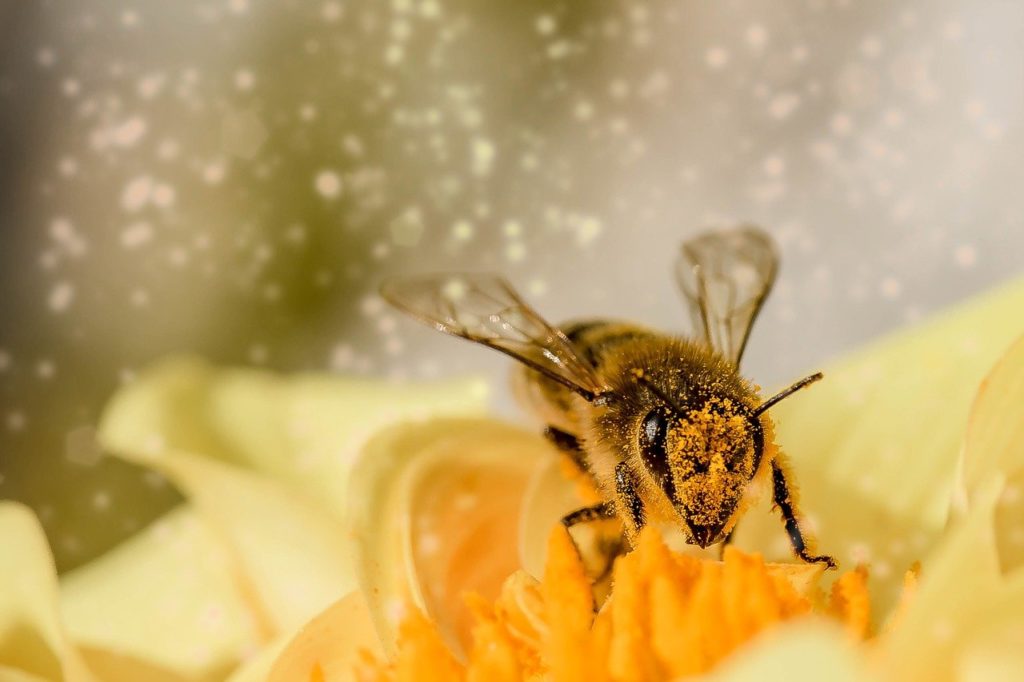A tiny Bee gives clue to a bigger issue

HAVE YOU EVER BEEN STUNG BY A BEE?
Nobody likes having a bee around. It’s a constant looming threat of a painful sting. And of course there’s the issue of allergies. Even if you’re not personally allergic to bee stings, people around you might be. So the sight of a Carpenter bee traps can cause some quite justifiable concern. So I don’t think that anyone would find fault with me for having some concern when I kept seeing bees wandering around in my house. What people might find strange is that it ended up with a desperate search for rodent removal Houston experts. Because, it turned out that the wildlife issue I was dealing with went far beyond bees. I literally spent days trying to track where the bees were coming from. And that’s when I discovered it.
Apparently I had a small leak in my roof. The leak, in turn, had begun rotting away the wood at the top of my house. And this had created a small hole. Insects had been making their way into my home through the hole. In reality, the bee was more of an early warning system than a pest. As I looked into it further, I saw tracks that looked distinctly worrisome. Very large claws have a way of making people a bit nervous.
IDENTIFYING A CARPENTER BEE INFESTATION
Carpenter bees come in two main types in North America, large and small. The larger bees are typically responsible for property damage and are just under an inch in size. They can be mistaken for bumblebees because of their size and hairy upper bodies. However, unlike bumblebees, carpenter bees have a black, shiny lower body.
These bees hollow out wood to make their homes, often in the wood siding of buildings. They may use existing tunnels rather than creating new ones. Look for perfectly shaped holes in the siding, often above the first level of a building, as a sign of their presence. Carpenter bees don’t eat wood, but they will leave wood bits and dust behind. Male carpenter bees are not aggressive but may defend their nest if they feel threatened.
Carpenter bees prefer dry wood and will nest in a variety of wooden surfaces, including house siding, door trim, and window sills. If you own or live near a multi-story building, carpenter bees are likely to nest on higher levels.
Carpenter bee activity can cause structural and aesthetic damage to buildings, as too many bees burrowing at once can be costly. Woodpeckers may also peck into siding looking for carpenter bee larvae. While male carpenter bees don’t sting, they can be territorial. Female carpenter bees can sting if provoked, posing a risk to pets and family members.
If you suspect a carpenter bee infestation, seek professional assistance to ensure the safety of your building and family.
BEE REMOVAL
Carpenter bee removal is essential to protect your home from the damage caused by these pests. The process involves identifying the infested areas, sealing off existing entry points, and treating the affected wood with insecticides to eliminate any remaining bees and prevent future infestations. However, in addition to removal, setting up carpenter bee traps can also be an effective way to control future infestations. These traps work by attracting carpenter bees with a lure and then trapping them inside, preventing them from burrowing into your home’s wooden structures.
PEST-RESISTANT SUNROOMS
A top-tier sunroom builder, like Four Seasons Sunrooms, prioritizes meticulous construction to prevent pest intrusion, including concerns about bees. These builders employ effective sealing techniques, ensuring that windows, doors, and structural elements are tightly secured. This meticulous attention to detail not only enhances the energy efficiency of the sunroom but also provides homeowners with peace of mind, knowing that their sunroom is well-constructed to resist unwanted pests like bees. With a focus on quality materials and craftsmanship, Four Seasons Sunrooms Reviews show that they build spaces that allow residents to enjoy the beauty of the outdoors without the concern of insect nuisances.
WHAT WAS MY SITUATION?

You can imagine how worried I was as I slowly backed my way down out of the attic. I knew there was a very good chance that there could be wild animals up there. Worse, I was also quite aware of the fact that they could be anywhere in the house. And in particular, I was horrified to realize that I’d been standing around with the entrance to the attic wide open. Anything could have jumped down from there while I wasn’t looking. I might have just let invaders go from my attic down into the house. I had terrified ideas of waking up with glowing eyes gazing into mine.
So, I very slowly began to back down the ladder. I almost wanted to call for wildlife control right there. But I had a rather justifiable fear that I’d begin a conversation only to have it punctuated by me starting to cry. Thankfully for me, that terror stayed firmly within the realm of my imagination. Or at least that particular fear was.
